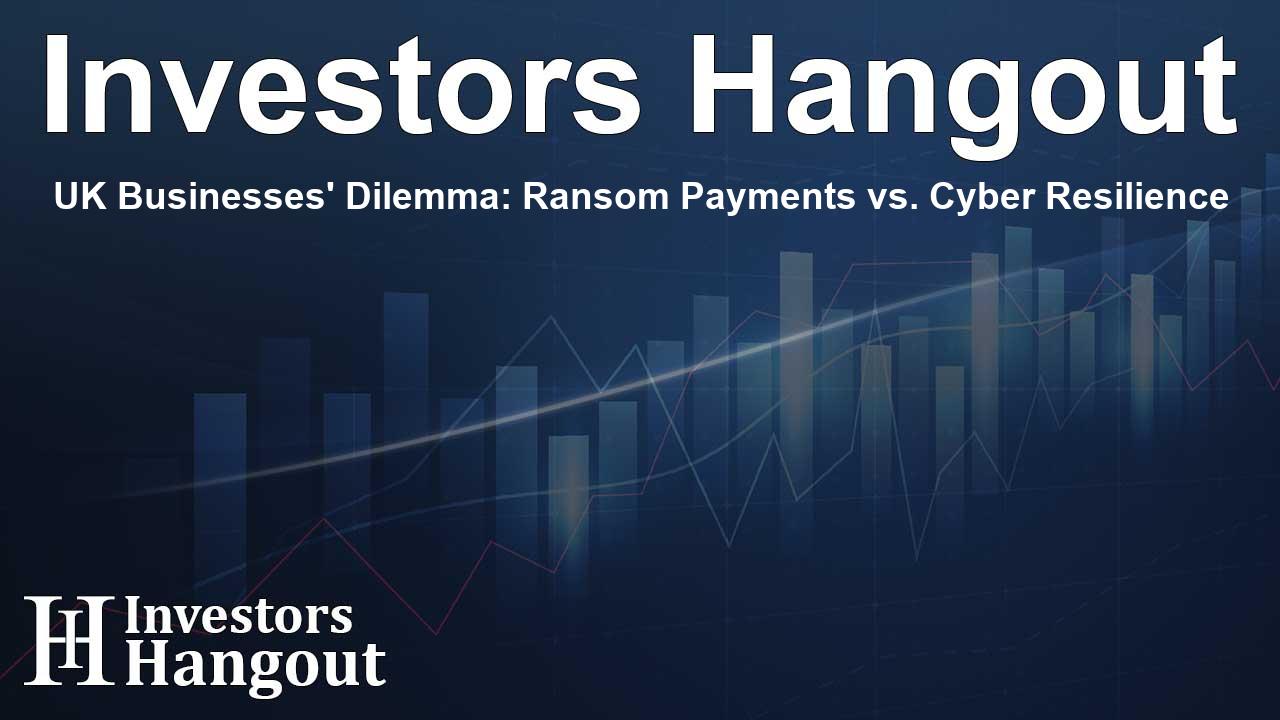UK Businesses' Dilemma: Ransom Payments vs. Cyber Resilience

Understanding the Ransomware Payment Dilemma
In a landscape where cyber threats loom large, recent research indicates that a staggering 75% of businesses in the UK would likely choose to breach a new ban on ransomware payments if it meant protecting their organizations. This manifests a significant disconnect between the desire for regulation and the grim realities faced by companies under attack.
Public and Private Sector Opinions
While 94% of respondents in a comprehensive study expressed support for a ban on ransom payments in the public sector, the consensus dramatically shifts in the midst of a crisis. Surprisingly, almost all participants (96%) advocate for such a ban across both public and private sectors. However, when confronted with a potential cyber-attack scenario, only 10% postulate that they would adhere to the ban, as survival instincts take precedence.
Implications of the Proposed Ban
The proposed ban aims to prohibit ransom payments for public sector organizations and critical national infrastructure operators, including essential services such as schools and transport systems. For businesses outside this remit, they would still be mandated to inform the government if they considered paying a ransom, underlining the serious approach towards tackling cyber threats.
Statistics From Recent Surveys
The alarming statistics from the latest Cyber Security Breaches Survey indicate that over 43% of UK businesses—approximately 612,000 in total—experienced cyber security breaches or attacks in the last year. This staggering figure reinforces the essential need for organizations to prioritize cybersecurity measures and recovery strategies.
Investment in Cyber Readiness
As businesses grapple with the ever-intensifying cyber threats, an overwhelming 98% of respondents recognize that enhancing cyber readiness and recovery processes is paramount. This shows a growing understanding that investing in robust defenses is far more effective than relying on ransom payments, which may not guarantee data retrieval.
Recovery Challenges and Strategies
Recovery from a cyber incident averages around 24 days, leading to substantial financial losses for larger organizations. For smaller enterprises, this may precipitate bankruptcy, making timely investment in recovery planning absolutely critical. Experts emphasize that simply paying a ransom does not ensure the return of stolen data, and often leaves organizations vulnerable to future attacks.
Expert Insights on Ransomware
Experts like Darren Thomson, Field CTO at Commvault, caution against the allure of ransomware payments, stating that such actions rarely promise a full recovery. Implementing a well-enforced payment ban could diminish the profitability of ransomware for attackers, but this must be complemented with formidable investments in prevention and recovery efforts to build resilience within organizations.
Future of Cyber Resilience
According to Jane Frankland MBE, a renowned expert in cybersecurity, as long as international cybercriminals earn significant profits from ransomware, the threat will persist. Businesses must prepare better for crises and enhance their cyber resilience, ensuring they can continue operations and serve customers even during incidents.
Research Background
This enlightening survey was carried out exclusively for Commvault by Censuswide, reaching out to a diverse sample of 1,000 business leaders from companies with substantial revenue, specifically those exceeding £100 million. The insights gathered reflect the urgent need to reassess strategies in the face of growing cyber threats.
About Commvault
Commvault (NASDAQ: CVLT) is recognized as a leader in cyber resilience, assisting over 100,000 organizations in safeguarding their data and ensuring business continuity. Their innovative cyber resilience platform provides unmatched data security and quick recovery across numerous workloads, making it a crucial tool for companies navigating the complex landscape of cybersecurity.
Frequently Asked Questions
1. What percentage of UK businesses would pay a ransom despite a ban?
75% of UK business leaders admit they would defy a proposed ban on ransom payments to protect their organizations.
2. How many businesses reported cyber breaches recently?
According to recent surveys, approximately 43% of UK businesses experienced some form of cyber breach or attack in the last year.
3. What is the average recovery time after a cyberattack?
On average, recovery from a cyberattack takes around 24 days, significantly impacting business operations.
4. What is the stance on ransomware payments in the public sector?
There’s strong support for a ban on ransom payments among both public and private sectors, with 96% favoring a prohibition in public entities.
5. Who conducted the research on ransomware payments?
The research was independently conducted by Censuswide for Commvault, reflecting the views of 1,000 UK business leaders.
About The Author
Contact Caleb Price privately here. Or send an email with ATTN: Caleb Price as the subject to contact@investorshangout.com.
About Investors Hangout
Investors Hangout is a leading online stock forum for financial discussion and learning, offering a wide range of free tools and resources. It draws in traders of all levels, who exchange market knowledge, investigate trading tactics, and keep an eye on industry developments in real time. Featuring financial articles, stock message boards, quotes, charts, company profiles, and live news updates. Through cooperative learning and a wealth of informational resources, it helps users from novices creating their first portfolios to experts honing their techniques. Join Investors Hangout today: https://investorshangout.com/
The content of this article is based on factual, publicly available information and does not represent legal, financial, or investment advice. Investors Hangout does not offer financial advice, and the author is not a licensed financial advisor. Consult a qualified advisor before making any financial or investment decisions based on this article. This article should not be considered advice to purchase, sell, or hold any securities or other investments. If any of the material provided here is inaccurate, please contact us for corrections.
